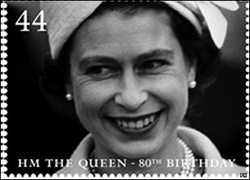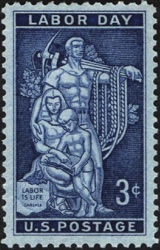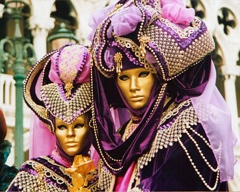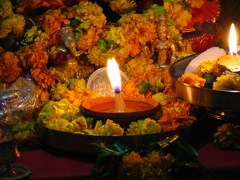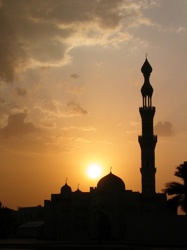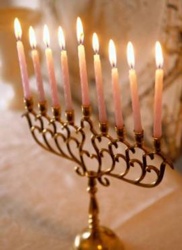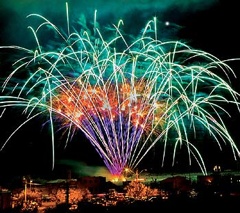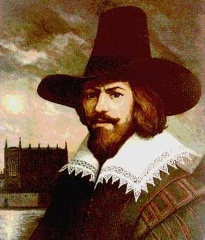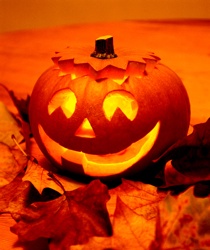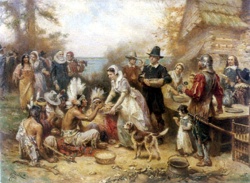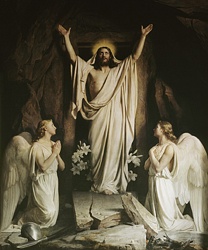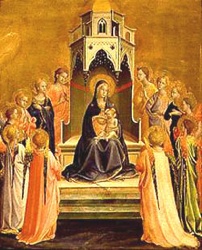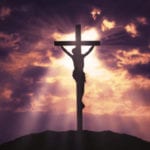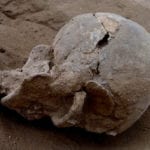SEE ALSO: 10 Holidays With Twisted, Dark, And Unusual Histories 15. Mother’s Day 2nd Sunday in May
Different countries celebrate Mother’s Day on various days of the year because the day has a number of different origins. One school of thought claims this day emerged from a custom of mother worship in ancient Greece. Mother worship — which kept a festival to Cybele, a great mother of Greek gods, the wife of Cronus; was held around the Vernal Equinox around Asia Minor and eventually in Rome itself from the Ides of March (15 March) to 18 March. The ancient Romans also had another holiday, Matronalia, that was dedicated to Juno, though mothers were usually given gifts on this day. In some countries the Mother’s Day began not as a celebration for individual mothers but rather for Christians to remember the mother church.
- Queen’s Birthday 1st, 2nd, or 3rd Saturday in June
The Queen’s Official Birthday (sometimes known as “the Queen’s Birthday”) is celebrated as a public holiday in several Commonwealth countries—usually Commonwealth Realms, although it is also celebrated in Fiji, now a republic. The word “Queen” in the name of the celebration is replaced by “King” when appropriate. The exact date of the celebration varies from country to country, and it does not usually mark the real birthday of the sovereign (the current monarch, Queen Elizabeth II, was born on 21 April 1926). Most Commonwealth Realms release a Birthday Honours List at this time. Interestingly, the English do not have a day off to celebrate the Queen’s birthday, whereas many countries in the Commonwealth do. 13. Labor Day 1st Monday in September
Labor Day is a national legal holiday that is over 100 years old. Over the years, it has evolved from a purely labor union celebration into a general “last fling of summer” festival. It grew out of a celebration and parade in honor of the working class by the Knights of Labor in 1882 in New York. In 1884, the Knights held a large parade in New York City celebrating the working class. The parade was held on the first Monday in September. The Knights passed a resolution to hold all future parades on the same day, designated by them as Labor Day. In the late 1880’s, labor organizations began to lobby various state legislatures for recognition of Labor Day as an official state holiday. The first states to declare it a state holiday in, 1887, were Oregon, Colorado, New York, Massachusetts, and New Jersey. Then in 1894, Congress passed a law recognizing Labor Day as an official national holiday. Today, Labor Day is observed not only in the U.S. but also in Canada, and in other industrialized nations. While it is a general holiday in the United States, its roots in the working class remain clearer in European countries. 12. Mardi Gras February or March, always a Tuesday
Mardi Gras (French for “fat Tuesday” is also known as Pancake Tuesday, or Shrove Tuesday. The history of Mardi Gras began long before Europeans set foot in the New World. In mid February the ancient Romans celebrated the Lupercalia, a circus-like festival not entirely unlike the Mardi Gras we are familiar with today. When Rome embraced Christianity, the early Church fathers decided it was better to incorporate certain aspects of pagan festivals into the faith rather than attempt to abolish them altogether. Carnival became a period of abandon and merriment that preceded the penance of Lent, thus giving a Christian interpretation to the ancient custom. Although Mardi Gras is basically a Catholic holiday, today it is party for everyone here in United States. This is especially true in New Orleans and other parts of Louisiana which can be credited for introducing this tradition in the country. Mardi Gras first came to New Orleans through French Culture in the year 1699 when the French explorers celebrated the holiday on the Mississippi River. Over the years, the celebration has witnessed growing national attention with many parades and parties coming in to add to its hue and flavor. 11. Diwali October or November
Diwali, also called Deepavali, is a major Indian festival that is very significant in Hinduism, Sikhism, and Jainism. Known as the “Festival of Lights,” it symbolises the victory of good over evil, and lamps are lit as a sign of celebration and hope for humankind. Celebrations focus on lights and lamps, particularly traditional d?pa or deeya (earthen lamp, as illustrated). Fireworks are associated with the festival. Diwali is a colloquial name used in North India, while the festival is formally called Deepavali in South India. Diwali is celebrated over five days in most of North India. All the days except Diwali are named using the designation in the Indian calendar. A lunar half-month is 15 days. Diwali as a new-moon day, marks the last day of a 15-day period. One of the most common stories about Divali is the return of Lord Rama and his wife Sita to Ayodhya after their fourteen year exile. This is related in the Ramayana (i.e. the Story of Rama). It tells the tale of how Lord Rama, with the aid of the monkey warrior, Hanuman, vanquished the evil king Ravana of Lanka and rescued his wife Sita who had been captured by him. His triumphant return home with Sita was greeted with joy and celebrations and the people lighted lamps in rows to welcome him. 10. St Valentine’s Day February 14
Saint Valentine’s Day or Valentine’s Day is a holiday on February 14. It is the traditional day on which lovers express their love for each other; sending Valentine’s cards or candy. The holiday is named after two men, both Christian martyrs among the numerous Early Christian martyrs named Valentine. The day became associated with romantic love in the circle of Geoffrey Chaucer in High Middle Ages, when the tradition of courtly love flourished. The first of the two Saints Valentine was Valentine of Rome (Valentinus presb. m. Romae): a priest in Rome who suffered martyrdom about AD 269 and was buried on the Via Flaminia. His relics are at the Church of Saint Praxed in Rome, and at Whitefriar Street Carmelite Church in Dublin, Ireland. The second is Valentine of Terni (Valentinus ep. Interamnensis m. Romae): He became bishop of Interamna (modern Terni) about AD 197 and is said to have been killed during the persecution of Emperor Aurelian. He is also buried on the Via Flaminia, but in a different location than Valentine of Rome. His relics are at the Basilica of Saint Valentine in Terni (Basilica di San Valentino). It has been hypothesised that Graeco-Roman holidays devoted to fertility and love might be related to St Valentine’s Day, since there is some correspondence between the time when they were celebrated. On the ancient Athenian calendar, the period between mid-January and mid-February was the month of Gamelion, dedicated to the sacred marriage of Zeus and Hera. The first recorded association of St Valentine’s Day with romantic love is in Parlement of Foules (1382) by Geoffrey Chaucer: “For this was on seynt Volantynys day whan euery bryd comyth there to chese [choose] his make [mate].” 9. St Patrick’s Day March 17
Saint Patrick’s Day (Irish: Lá ’le Pádraig or Lá Fhéile Pádraig), colloquially St. Paddy’s Day or Paddy’s Day, is an annual feast day which celebrates Saint Patrick (circa 385–461), one of the patron saints of Ireland. It takes place on 17 March, the date on which Patrick is held to have died. It became a feast day in the Roman Catholic Church due to the influence of the Waterford-born Franciscan scholar Luke Wadding in the early part of the 17th century, and is a holy day of obligation for Roman Catholics in Ireland. The date of the feast is occasionally moved by church authorities due to clashes with Holy Week; this last happened in 1940, when Saint Patrick’s Day was observed on 3 April in order to avoid it coinciding with Palm Sunday, and will happen again in 2008, when it shall be held on 15 March to avoid Holy Monday. St Patrick was a Christian missionary and is the patron saint of Ireland along with Brigid of Kildare and Columba. Patrick was born in Roman Britain in the 3rd or 4th century. When he was about sixteen he was captured by Irish raiders and taken as a slave to Ireland, where he lived for six years before escaping and returning to his family. He entered the church, as his father and grandfather had before him, becoming a deacon and a bishop. He later returned to Ireland as a missionary, working in the north and west of the island. 8. Eid ul-Fitr End of Ramadan
Eid ul-Fitr or Id-Ul-Fitr, often abbreviated as simply Eid, is a Muslim holiday that marks the end of Ramadan, the month of fasting. Fi?r means “to break the fast” and therefore symbolizes the breaking of the fasting period. On the day of the celebration, a typical Muslim family is awake very early and then after praying the first normal everyday prayer, is required to eat in a small quantity, symbolizing the end of Ramadan. They then attend special congregational prayers held only for this occasion in mosques, in large open areas, stadiums or arenas. The prayer is generally short, and is followed by a sermon (khu?ba). Worshippers greet and embrace each other in a spirit of peace and love after the congregational prayer. After the special prayers, festivities and merriment are commonly observed with visits to the homes of relatives and friends to thank God for all blessings.
- Hanukkah Late November to late December
Hanukkah is one of the important holidays of Judaism which is not found in the modern Jewish canon of the Bible. They were originally included in the texts used by Jews until around 70AD. The holiday is mentioned in the books of 1 and 2 Maccabees (these are found in the Catholic and Orthodox Bibles, but were excluded by protestants in the 16th century from their version). Hanukkah is also known as the Festival of Lights, and it is an eight-day holiday beginning on the 25th day of the month of Kislev, which may fall anytime from late November to late December. It celebrates the re-kindling of the Temple menorah at the time of the Maccabee rebellion. The festival is observed in Jewish homes by the kindling of lights on each night of the holiday – one on the first night, two on the second, and so on. The special menorah (candelabrum) used for this festival contains nine candles, rather than the usual seven. The primary ritual, according to Jewish law and custom, is to light a single light each night for eight nights. As a universally-practiced “beautification” of the mitzvah, the number of lights lit is increased by one each night. An extra light called a shamash, meaning guard or servant is also lit each night, and is given a distinct location, usually higher or lower than the others. The purpose of the extra light is to adhere to the prohibition, specified in the Talmud (Tracate Shabbat 21b-23a), against using the Hanukkah lights for anything other than publicizing – and meditating on – the Hanukkah story.
- Independence Day July 4
Independence Day is the national holiday of the United States of America commemorating the signing of the Declaration of Independence by the Continental Congress on July 4, 1776, in Philadelphia, Pennsylvania. At the time of the signing the US consisted of 13 colonies under the rule of England’s King George III. There was growing unrest in the colonies concerning the taxes that had to be paid to England. This was commonly referred to as “Taxation without Representation” as the colonists did not have any representation in the English Parliament and had no say in what went on. Independence Day is commonly associated with fireworks, parades, barbecues, picnics, baseball games, and various other public and private events celebrating the history, government, and traditions of the United States. Fireworks have been associated with the Fourth of July since 1777. 5. Guy Fawkes Night November 5
Guy Fawkes, also known as ‘Guido’, was a member of a group of English Roman Catholics who attempted to carry out the The Gunpowder Plot, an attempt to blow up the Houses of Parliament and kill King James I of England, to end Protestant rule, on 5 November 1605. Fawkes was ranked 30th in the 2002 list of “100 Greatest Britons”, sponsored by the BBC and voted for by the public. He was also included in a list of the 50 greatest people from Yorkshire. Guy Fawkes Night, also called Bonfire Night, is an annual celebration (but not a public holiday) on the evening of the 5th of November primarily in the United Kingdom, but also in former British colonies New Zealand, South Africa, the island of Newfoundland (Canada), parts of the British Caribbean including the Bahamas, and to some extent by their nationals abroad. The celebrations, which in the United Kingdom take place in towns and villages across the country, involve fireworks displays and the building of bonfires, on which “guys”, or dummies, representing Guy Fawkes, the most infamous of the conspirators, are traditionally burnt. Before the fifth, children traditionally used the “guys” to beg for money with the chant “Penny for the guy”, although this is now rarely seen.
- Halloween October 31
Halloween, or Hallowe’en, is a holiday celebrated on the night of October 31st. Traditional activities include trick-or-treating, costume parties, viewing horror films, visiting “haunted houses”, and participating in traditional autumn activities such as hayrides (which may have “haunted” themes). Halloween originated under the name of Samhain as a Pagan festival among the Celts of Ireland and Great Britain. Irish and Scottish immigrants carried versions of the tradition to North America in the nineteenth century. Other western countries embraced the holiday in the late twentieth century. The origin of the name “Halloween” is from “All hallows Eve” or, the even of All Saints Day which is a Catholic feast day celebrated on the 1 of November. According to what can be reconstructed of the beliefs of the ancient Celts, the bright half of the year ended around November 1 or on a moon-phase near that date, or at the time of first frost. The day is referred to in modern Gaelic as Samhain (“Sow-in” or alternatively “Sa-ven”, meaning: End of the Summer). After the adoption of the Roman calendar with its fixed months, the date began to be celebrated independently of the Moon’s phases. As October 31 is the last day of the bright half of the year, the next day also marked the beginning of winter, which the Celts often associated with death, and with the slaughter of livestock to provide meat for the coming winter. The Celts believed that on October 31, the boundary separating the dead from the living became blurred. There is a rich and unusual myth system at work here; the spirit world, the residence of the “Sídhe”, as well as of the dead, was accessible through burial mounds. These mounds were opened twice during the year, on Samhain and Beltane, making the beginning and end of summer spiritually resonant. 3. Thanksgiving Fourth Thursday in November
Thanksgiving, or Thanksgiving Day, is an annual one-day holiday to give thanks, traditionally to God, for the things one has at the end of the harvest season. The early settlers of Plymouth Colony in Massachusetts were particularly grateful to Squanto, the Native American who taught them how to catch eel, grow corn and who served as their native interpreter (as Squanto had learned English as a slave in Europe). Without Squanto’s assistance, the settlers might not have survived in the New World. The Plymouth settlers (who came to be called “Pilgrims”) set apart a holiday immediately after their first harvest in 1621, when they held an autumn celebration of food, feasting, and praising God. The Native American chiefs Massassoit, Squanto and Samoset joined in the celebration with ninety of their men in the three-day event. President Abraham Lincoln first declared Thanksgiving a Federal holiday..as a “prayerful day of Thankgiving” on the last Thursday in November. Modern Thanksgiving in the United States is now celebrated on the fourth Thursday in November. In the United States, certain kinds of food are traditionally served at Thanksgiving meals. First and foremost, turkey is usually the featured item on any Thanksgiving feast table (so much so that Thanksgiving is sometimes referred to as “Turkey Day”). Stuffing, mashed potatoes with gravy, sweet potatoes, cranberry sauce, maize, other fall vegetables, and pumpkin pie are commonly associated with Thanksgiving dinner. All of these primary dishes are actually native to the Americas or were introduced as a new food source to the Europeans when they arrived.
- Easter Sunday Sunday in late March
Easter, the Sunday of the Resurrection, Pascha, or Resurrection Day, is the most important religious feast of the Christian liturgical year, observed at some point between late March and late April each year (early April to early May in Eastern Christianity), following the cycle of the moon. It celebrates the resurrection of Jesus, which Christians believe occurred on the third day of his death by crucifixion some time in the period AD 27 to 33. The holiday marks the end of the forty day fast of Lent, during which time Christians are supposed to abstain from meat, fat (traditionally), and all but the simplest foods. This is also the time that Christians “give something up for Lent”. Shortly after St Anicetus became the Pope in the mid second century (ca. AD 155), Polycarp visited Rome and among the topics discussed was when the pre-Easter fast should end. Those in Asia held strictly to the computation from the Old Testament’s Hebrew calendar and ended the fast on the 14th day of Nisan, while the Roman custom was to continue the fast until the Sunday following. In modern times we use the Roman measurement. In Western Christianity, Easter always falls on a Sunday from March 22 to April 25 inclusive. The following day, Easter Monday, is a legal holiday in many countries with predominantly Christian traditions. In Eastern Christianity, Easter falls between April 4 and May 8 between 1900 and 1970 based on the Gregorian date.
- Christmas December 25
Christmas is an annual holiday that celebrates the birth of Jesus. Christmas festivities often combine the commemoration of Jesus’ birth with various customs, many of which have been influenced by earlier winter festivals. Traditions include the display of Nativity scenes, Holly and Christmas trees, the exchange of gifts and cards, and the arrival of Father Christmas (Santa Claus) on Christmas Eve or Christmas morning. A winter festival was traditionally the most popular festival of the year in many cultures. Reasons included less agricultural work needing to be done during the winter, as well as people expecting longer days and shorter nights after the winter solstice in the Northern Hemisphere. In part, the Christmas celebration was introduced by the early Church in order to make the conversion of pagan Romans to Christianity easier. Most of the most important gods in the religions of Ishtar and Mithra had their birthdays on December 25. Various Christmas traditions are considered to have been absorbed from winter festivals. Bonus: Memorial Day Last Monday of May
Memorial Day is a United States federal holiday that is observed on the last Monday of May (observed in 2007 on May 28). It was formerly known as Decoration Day. This holiday commemorates U.S. men and women who have died in military service to their country. It began first to honor Union soldiers who died during the American Civil War. After World War I, it was expanded to include those who died in any war or military action. One of the longest standing traditions is the running of the Indianapolis 500, which has been held in conjunction with Memorial Day since 1911. It is also traditionally viewed as the beginning of summer by many, for many schools are dismissed around Memorial Day. According to Professor David Blight of the Yale University History Department, the first memorial day was observed in 1865 by liberated slaves at the historic race track in Charleston. The site was a former Confederate prison camp as well as a mass grave for Union soldiers who had died while captive. A parade with thousands of freed blacks and Union soldiers was followed by patriotic singing and a picnic. Notable Omissions: Nowruz Sources: Wikipedia Technorati Tags: history, holidays
Read More: Facebook Instagram Email

